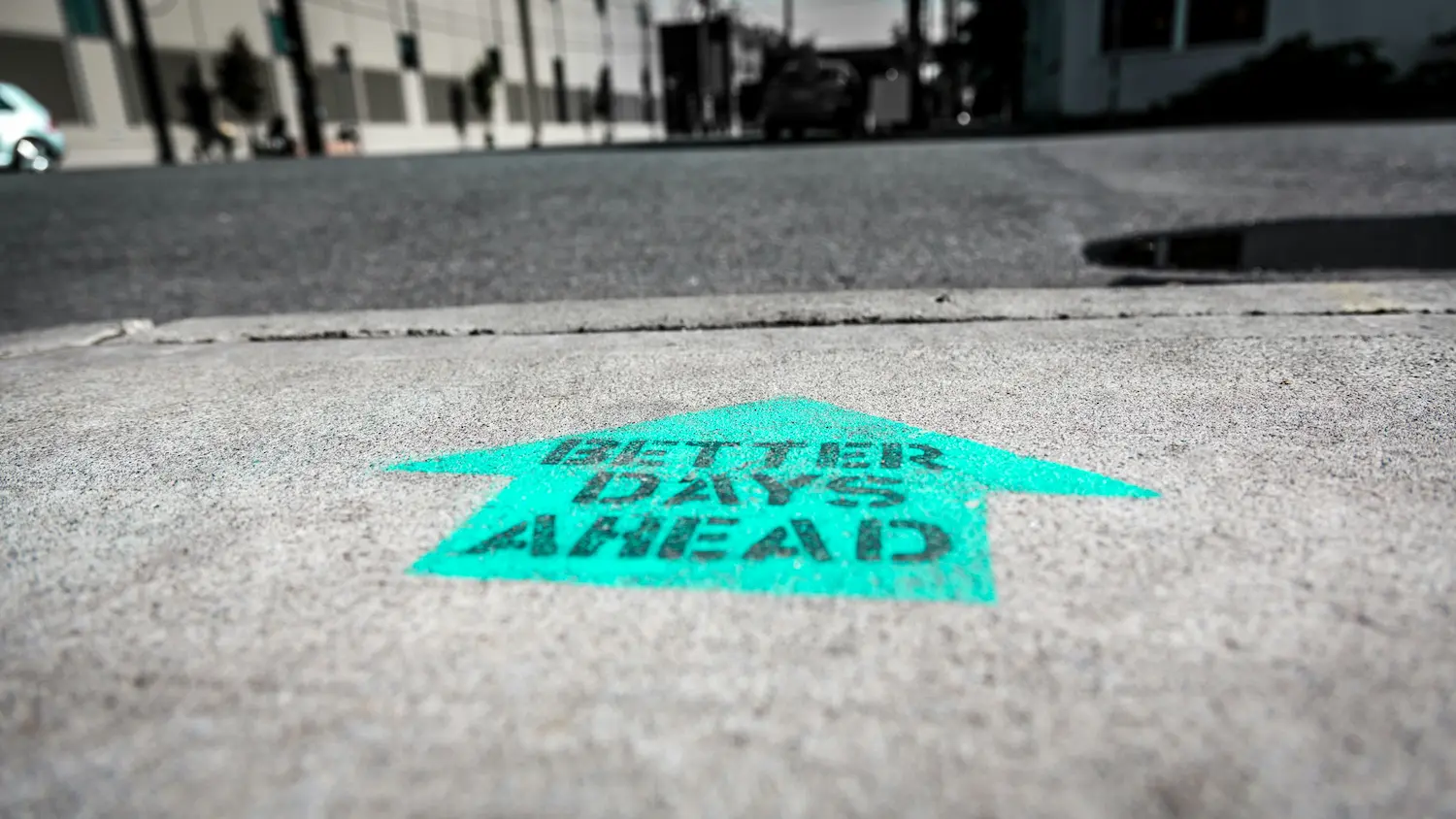The truth is, many marketers still rely on modeled projections that only estimate visitation. These numbers may look impressive, but they’re guesses. Sorry to burst your bubble, but that’s not the same as proof. With accurate foot traffic data and foot traffic analytics, you can stop guessing and start measuring real-world outcomes.
This guide explores how observed offline attribution replaces assumptions, helping you prove ROI and optimize your marketing strategy with confidence.
Yes. You Need To Use Accurate Foot Traffic Data
Not all foot traffic measurement is created equal. Many providers rely on modeled panel data, extrapolating from small samples to guess at total visitation. You read that right. Guess. Assuming a small sample size is representative of a larger population can lead to misleading metrics that do not accurately represent the people visiting your locations. Panels are also biased toward large urban and higher-income populations, which makes modeled results unreliable for rural or lower-income communities.
OnSpot takes a different approach: delivering observed data collected directly from mobile devices with user consent. This means every visit counted reflects an actual device present within a defined location boundary—not a projection from a panel.
Accurate foot traffic data unlocks higher confidence in your marketing analytics. With precise location boundaries from OnSpot’s Auto-Polygon technology, you eliminate “noise” from nearby businesses and parking lots. The result is actionable insights you can trust, powered by a location analytics platform built for scale.
With aggregated foot traffic data, marketers can spot broad patterns without exposing individual identities, balancing insight with compliance. If you’re asking how to get foot traffic data that’s reliable, the answer lies in observed, privacy-compliant signals—not panels.
Key Use Cases for Foot Traffic Analytics
Foot traffic analytics goes far beyond counting visits. It reveals how consumers behave in the physical world, and it has applications across nearly every part of the marketing funnel.:
Advertising: Brands and agencies use foot traffic analytics to prove campaign performance. By validating OOH, CTV, or programmatic ads against real-world visitation, advertisers demonstrate ROI and refine media strategies.
Retail: Retailers depend on retail foot traffic data for site selection, competitive benchmarking, and in‑store optimization. Understanding when and where customers shop informs staffing, merchandising, and expansion decisions.
REITs & Commercial Real Estate: Real estate investment trusts and landlords use aggregated foot traffic data to benchmark property performance, evaluate tenant mix, and support leasing strategy with validated visitation insights.
Financial Services: Banks and financial institutions apply foot traffic analytics to branch performance, trade‑area analysis, and M&A due diligence—linking customer movement patterns with investment strategy.
Political Campaigns: Political strategists measure which events, rallies, or canvassing efforts actually generate attendance. They can also compare cross‑district visitation trends to target outreach more effectively.
When marketers apply foot traffic analytics to these industries, they close the gap between consumer awareness and actual performance metrics. Offline patterns become critical decision-making inputs, from campaign optimization to site planning and investment.
From Data to ROI–Campaign Measurement with Foot Traffic
Accurate visitation data is only valuable when it can be tied to ROI. That’s where campaign measurement comes in.
Case Study: Panera Bread National TV Campaign
When Panera Bread launched a national TV campaign, OnSpot’s attribution tools measured a 4.5% increase in foot traffic directly tied to the ads. This real-world example shows how offline attribution validates campaign effectiveness at scale, turning media spend into measurable store visits.
At the center of this case is offline visitation: the metric that links digital campaign exposure to in-person outcomes. Instead of relying solely on pixels or clicks, offline visitation connects ad impressions to store visits, showroom traffic, or event attendance.
Marketers use several measurement frameworks, including:
- Sales lift analysis: Compare revenue before and after campaigns to identify impact.
- Incremental visits: Measure the difference between users exposed to ads and a control group of unexposed users.
- Cost per incremental visit (CPIV): Understand efficiency by dividing campaign spend by incremental visits driven.
- Visit rate attribution: Calculate the percentage of exposed users who later visited a physical location.
Combined with mobile ad IDs and precise location data, these models show whether ads truly influenced consumer behavior. That’s the power of offline attribution. Marketers are tying digital impressions to tangible, real-world outcomes.
How Foot Traffic Attribution Works in Practice
To measure offline impact, marketers start by identifying the points of interest (POIs) they want to analyze—these could be stores, event venues, competitor locations, or even billboards. Using a location analytics platform like OnSpot’s, they define the exact geographic boundaries of each POI using polygon mapping, not simple radius-based targeting.
Next, they select a lookback window, typically ranging from a few days to several weeks after ad exposure. This window determines how long after seeing an ad a device can still count as a “visit.”
From there, OnSpot matches anonymized mobile ad IDs to observed device signals at the POIs. These signals are then used to generate metrics like visitation lift, cost per visit, and incremental conversions, providing marketers with a clear, defensible view of campaign performance.
What sets foot traffic attribution apart from traditional digital metrics is that it measures real-world outcomes, not just online intent. Clicks and impressions can signal awareness, but they don’t confirm whether a customer actually visited a location. Observed foot traffic data answers that question definitively, capturing whether a device was physically present at a store, showroom, or event. That’s the difference between interest and impact, and it’s what makes offline attribution essential for ROI-driven marketers.
Cross-Channel & Omnichannel Attribution
Shoppers don’t experience brands one channel at a time. They actually expect to see a connected TV ad, receive a programmatic display impression, and open a piece of direct mail—all before stepping into a store. Traditional reporting struggles to connect these dots.
Out-of-home (OOH) advertising is a great example of how foot traffic bridges the offline and digital worlds. Historically considered untrackable, placements like billboards and transit ads can now be tied to store visits. For instance, a brand running a street-level OOH campaign can analyze which audiences were exposed to specific signage and later visited a retail location nearby. When combined with CTV, display, or direct mail, this allows marketers to isolate each channel’s contribution and optimize future media mix.
Foot traffic data solves this by acting as the common denominator across touchpoints. It verifies that omnichannel impressions ultimately result in visits. This strengthens omnichannel attribution strategies and provides clarity for cross-channel measurement.
For example, pairing visitation data with digital campaigns helps prove the ROI of upper-funnel media like CTV or audio. Adding visitation insights to direct mail reveals which households actually took action. It’s a truly holistic view of the customer journey.
Explore OnSpot’s Attribution Solutions to connect online exposure with offline action.
Best Practices for Using Foot Traffic Data
To get the most from foot traffic data, marketers should follow a set of best practices:
- Ensure sample size validity: Large, diverse datasets deliver more accurate insights. Small panels risk bias, especially in rural or lower-income markets.
- Align with campaign KPIs: Decide whether success is measured by visits, dwell time, or incremental lift.
- Define attribution windows: Set reasonable timeframes (e.g., 3–7 days after exposure) to avoid over-crediting.
- Pair offline attribution with revenue outcomes: Visits matter most when tied to sales or conversions.
- Use privacy-compliant providers: Work only with vendors who anonymize data and follow GDPR/CCPA standards. Choosing the right foot traffic data providers is critical; accuracy and privacy compliance vary widely, and cutting corners here undermines every measurement effort.
Foot traffic analytics connects traffic patterns with in-store performance metrics like dwell time and conversion. These best practices help you measure foot traffic from ads with accuracy and ensure results reflect real-world consumer behavior.
Why Observed Foot Traffic Is a Strategic Advantage
Foot traffic data isn’t just a measurement tactic. It’s a competitive advantage. In a cookieless, cross-channel world, marketers need reliable ways to connect online exposure with offline action. Observed visitation provides that connection.
OnSpot’s location analytics platform delivers accurate, privacy-compliant foot traffic data at scale. Whether you're evaluating media performance, optimizing store locations, or justifying campaign spend, the platform turns device observations into measurable business outcomes.
Don't settle for assumptions. Prove what’s working. Request a demo to see how OnSpot helps you connect ad exposure to real-world results, one visit at a time.
Foot Traffic Data & Measurement FAQ
Q: What’s the difference between modeled panel data and observed foot traffic data?
A: Modeled data extrapolates from small, often biased panels. Observed data captures real device signals at physical locations, providing higher accuracy and removing the uncertainty that comes with assumptions. This is especially important in areas that panels tend to overlook.
Q: Can offline foot traffic measurement help with site selection?
A: Yes. By analyzing historical visitation patterns, retailers can identify high-density trade areas, assess nearby competition, and reduce risk when choosing new store locations.
Q: How does offline visitation measurement improve attribution modeling?
A: It connects ad impressions to real-world visits. This closes the gap between exposure and outcome, strengthens multi-touch attribution, and improves the accuracy of ROI analysis.
Q: Can foot traffic analytics measure the impact of OOH advertising?
A: Yes. Observed device data can show whether exposure to billboards, transit ads, or other out-of-home placements led to increased visits. This makes it possible to measure the effectiveness of a traditionally hard-to-quantify channel.
Q: How accurate is foot traffic measurement using mobile ad IDs?
A: When collected from anonymized, consented devices using precise location boundaries, mobile ad IDs provide high-level accuracy. Marketers can trust that visits are correctly tied to the intended location.
Q: How do you get foot traffic data you can trust?
A: Work with providers who use observed, aggregated data instead of estimates. Choose partners that follow privacy regulations and maintain broad, balanced device coverage to ensure the insights are representative and reliable.


